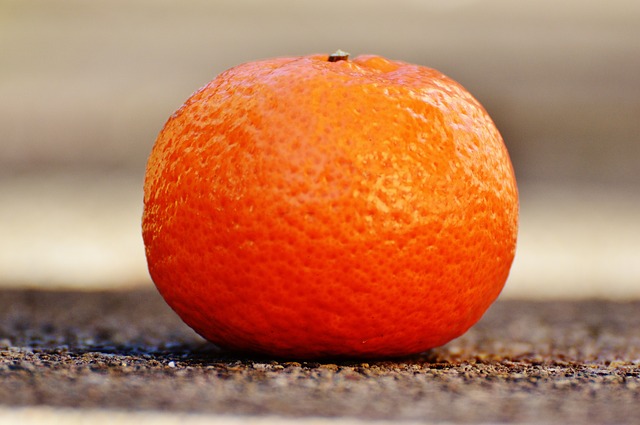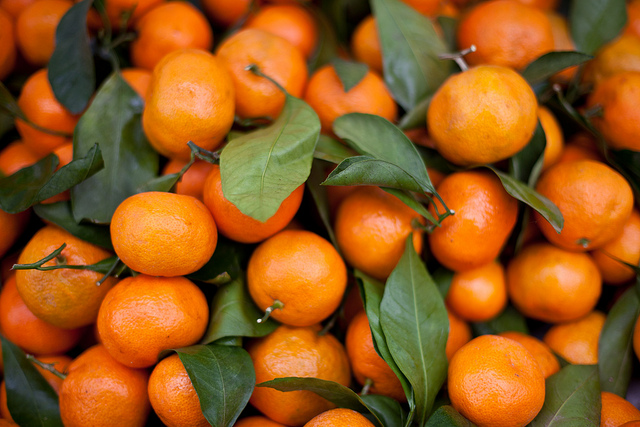Difference Between Mandarin and Tangerine
At face value the mandarin and the tangerine look the same, smell the same and belong to the citrus family of fruits. When you peel them and open them up they have segments of orange flavoured fruit and are delicious to eat. Rich in vitamin C and other health benefits they really do seem to be the same, but in the final analysis a mandarin is a mandarin and the tangerine is a cultivar of the mandarin, therefore a tangerine can be a mandarin, but a mandarin cannot be a tangerine because a tangerine is a mandarin!.
That sounds complicated, but it simply means there are great similarities between the fruits because the tangerine is a variety of mandarin and a sub group of that species. There are some differences attributed to the skin, the colour, the taste and the shape. Mandarins came from China. Their name Mandarin originates from the Chinese officials called Mandarins who wore orange clothing as a signature colour of their official importance. The tangerine gets its name from Tangiers. It was imported into Europe from Tangiers, Morocco in the 1800s. The mandarin orange became popular because it is easier to peel than an ordinary orange and the other members of the citrus family. The mandarin is sweet and soft but the tangerine on the other hand is sought after as an export fruit. This is because it has a tougher skin and transports better. It can withstand drier conditions and some heavy handling better than the mandarin.

Look at the qualities of each fruit and see how they compare.
Firstly, the mandarins:
- Loose soft easy to peel skins and sweet fruit
- Good source of vitamin A and folic-acid as well as sources of flavonoids and antioxidants.
- Full of vitamin C and a citrus fruit
- Harvested in winter and canned easily to be available all year round
- Provides flavour for candy, bubble gum and ice-cream
- The scent from the peel has been used in perfumes
- Research tells us eating mandarins can lower the risk of liver cancer
- Mandarins have synephrine that lowers bad cholesterol
- They lower blood pressure and are a great source of fibre.
Mandarins certainly offer a great deal of health benefits all packed into a small citrus fruit that looks like an orange. The University of California has over one hundred and sixty different hybrids and varieties of mandarins. There are clementine, satsumas, Tangors, and owari to name a few. All these hybrids are basically mandarins.

Secondly the tangerines
- A darker orange skin that is rougher and thicker and more difficult to peel.
- It has a sturdy skin and that makes it a better export option as it does not bruise so easily.
- It survives better in high temperatures and dry conditions.
- Tangerines are a bit tart compared with the sweeter mandarin.
- They are similar in nutritional value consisting of 50 calories, 2g of fibre, 2tsp of sugar vitamin C and other anti-oxidants.
- Tangerines and the other cultivars of the mandarin fruit are all part of the citrus family.
More Interesting facts about mandarins and its hybrid the tangerine.
Mandarin oranges originated in China and together with its cultivar the tangerine they belong to the family of Rutaceae in horticultural circles. China produces the largest number of mandarins in the world and their tonnage was over 27 million in 2011. Tangerines were brought to America in the mid nineteenth century to grow in New Orleans but later taken to Florida where they grow very well. Tangerines are the better export option because they are hardier and don’t bruise so easily. Mandarins have traditions behind them that make them popular at Christmas time and during the Chinese New Year celebrations. They are a symbol of abundance and good fortune. At Christmas time a neat little mandarin or tangerine popped into a Christmas stocking is also part of traditional celebrations. The golden fruit is a reminder of the gift that Saint Nicholas gave to three poor sisters who had nothing for Christmas. Tradition tells the story of how they hung their stockings out and three golden balls were sent down the chimney to bring them a very precious Christmas gift.
The health benefits of these fruits are very comprehensive. Each mandarin can provide up to 80% of a person’s daily nutritional requirements. That is a substantial amount of goodness all packed into one little citrus fruit. Mandarins not only produce juicy sweet fruit, but their peel is useful too. This fruit can provide basic nutrition and contribute to the luxuries of life. Our skin, hair and overall health can use so much of this little orange. The peel produces essential oils used in perfumes and beauty care. When you eat a mandarin or for that matter a tangerine you are improving your skin tone and hair condition. The essences and flavours used for liqueurs and other luxury products in the culinary world are often harvested from mandarins.
Looking after mandarins as well as tangerines in your kitchen shows the similarity of the two fruits. They are cared for and utilised in the same way.
The mandarin fruit and its hybrid counterparts are a popular addition to the kitchen and can be found in households as well as restaurants. Raw or canned mandarins can be eaten in salads and with various other dishes. Tangerines are popular in chicken dishes. Their neat little orange segments make beautiful orange decorations on cakes and deserts. They are so easy to peel and have very little white mesocarp in the peel.
The selection process for these fruits is also important and the key issues are similar for both fruits.
- Look for blemishes on the skin, they will indicate some distortion of the fruit on the inside.
- Weigh up the difference in the weight of the fruit. A heavier mandarin will have more juice.
- Avoid the mandarins that are soft, they may be over ripe inside or bruised and damaged.
- Look out for cuts on the skin as the fruit inside may be damaged when the skin is broken.
Take care over the storage of the mandarin and its cultivars.
- Store at room temperature for about a week.
- Refrigerate for 2 weeks.
- Don’t wash the skin, it encourages fungus and is not necessary as you don’t eat the skin.
- Freezer friendly, but the white pith and peel must be removed as it leaves a bitter taste. This is a laborious process but the fruit segments will freeze in freezer bags and can be reused or juiced
- Another freezer option is to freeze the fruit in a sugar solution.
A final comparison chart show how similar these two citrus fruits are:

Naming these two fruits so differently has probably added to the confusion surrounding them in the minds of the man in the street. What a joy it is to purchase these fruits when the time comes for them to make their appearance on the shelves. How versatile they are when it comes to preparation and enjoyment. You can juice them, freeze them, blend them, can them, decorate with them and cook with them.There is no doubt that when you compare these two fruits, and the information surrounding their cultivation, that they hardly differ. The tangerine is essentially a mandarin and therefor it is easy to see that the similarities out weigh the differences. However, there are some differences but the aspects that differ are essentially same. For example, the colour of the fruit, the composition of the fruit and the origin of the fruit all remain the same. The subtle differences that set the tangerine apart are in its ability to be transported safely while its fruit of origin, the mandarin, is sweeter to taste and a favourite to eat as it is so easy to peel.
Doctors and scientists would have us believe that you can increase your healthy lifestyle enormously just by eating one mandarin a day. Perhaps the new health mantra should be:
“a mandarin a day keeps the doctor away!” instead of the good old faithful apple.
- Difference Between Lagoon and Bay - October 20, 2021
- Difference Between Futurism and Preterism - August 12, 2021
- Difference Between Dichotomy and Paradox - August 7, 2021
Search DifferenceBetween.net :
1 Comment
Leave a Response
References :
[0]Image credit: https://pixabay.com/en/mandarin-fruit-citrus-fruit-healthy-1111476/
[1]Image credit: https://www.flickr.com/photos/neilconway/6545431997
[2]Peters,Geoff.Is-it-a-mandarin-or-tangerine.www.extention.psu.edu. Penstatextentionmedia.college of Agricultural sciences date retrieved 12.03.2018
[3]Rickett,Chris. Is-this-a-mandarin-clemintine-satsuma-or-tangerine-6248564.www.metro.co.uk/2016/11/10.associatednewspapersltd retrieved 12.03.18
[4]Albert,steve.A-history-of-the-mandarin-orange.www.harvesttotable.com/retrieved 13.03.18

The picture mandarin vs tangerine ,tang“a”rine is it right?